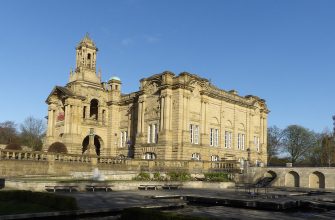
The Oxford University Museum of Natural History is a museum in Oxford, England, dedicated to natural history and scientific collections. Located in the heart of Oxford, the museum attracts thousands of visitors each year and is one of the city’s most popular attractions. Founded in 1860, the museum has a rich history of scientific research and exploration, and is home to some of the world’s most important scientific collections.
History of the Museum
The Oxford University Museum of Natural History was established in 1860 by the University of Oxford. The original museum building was designed by the renowned architect Thomas Deane and was opened to the public in 1860. Over the years, the museum has been home to many important scientific collections, including the first specimens of the dodo bird, collected by Sir Thomas Browne in the 16th century. The museum was also the site of the first public demonstration of the microscope in England, held by Robert Hooke in 1664.
Attractions and Exhibits
The museum is home to a wide range of exhibits, from fossils and minerals to zoology and entomology. The museum’s collections are divided into four main categories: zoology, entomology, geology, and palaeontology. The museum also houses a number of scientific instruments, such as microscopes, telescopes, and other scientific tools.
The museum also hosts a variety of events and workshops throughout the year, including lectures, workshops, and special exhibitions. The museum also offers guided tours of its collections and exhibits, as well as educational activities for children.
Things to Do in Oxford
The Oxford University Museum of Natural History is one of the city’s most popular attractions. Visitors to the museum can explore the museum’s collections and exhibits, as well as participate in educational activities and guided tours. The museum also offers a variety of activities for children, such as the museum’s interactive Fossil Quest game.
The museum is also a great place to learn about the history of science in Oxford. Visitors can explore the museum’s collections, which include some of the world’s most important scientific collections, as well as learn about the history of scientific research in the city.
Admission and Tours
Admission to the Oxford University Museum of Natural History is free for all visitors. Guided tours of the museum’s collections and exhibits are available for a fee.
Tips for Tourists
The Oxford University Museum of Natural History is a great place to explore the history of science and natural history. Here are some tips for visitors:
- Allow plenty of time to explore the museum’s collections and exhibits.
- Bring a camera to take photos of the museum’s exhibits and collections.
- Check the museum’s website for information about special events and workshops.
- Wear comfortable shoes and clothing as you may be on your feet for a long time.
- Be prepared for crowds during peak season.
- Bring a jacket or sweater as the museum can be cool.
Practical Information
The Oxford University Museum of Natural History is located at Parks Road, Oxford, England. The museum is open daily from 10am to 5pm. For more information, visit the museum’s website.








